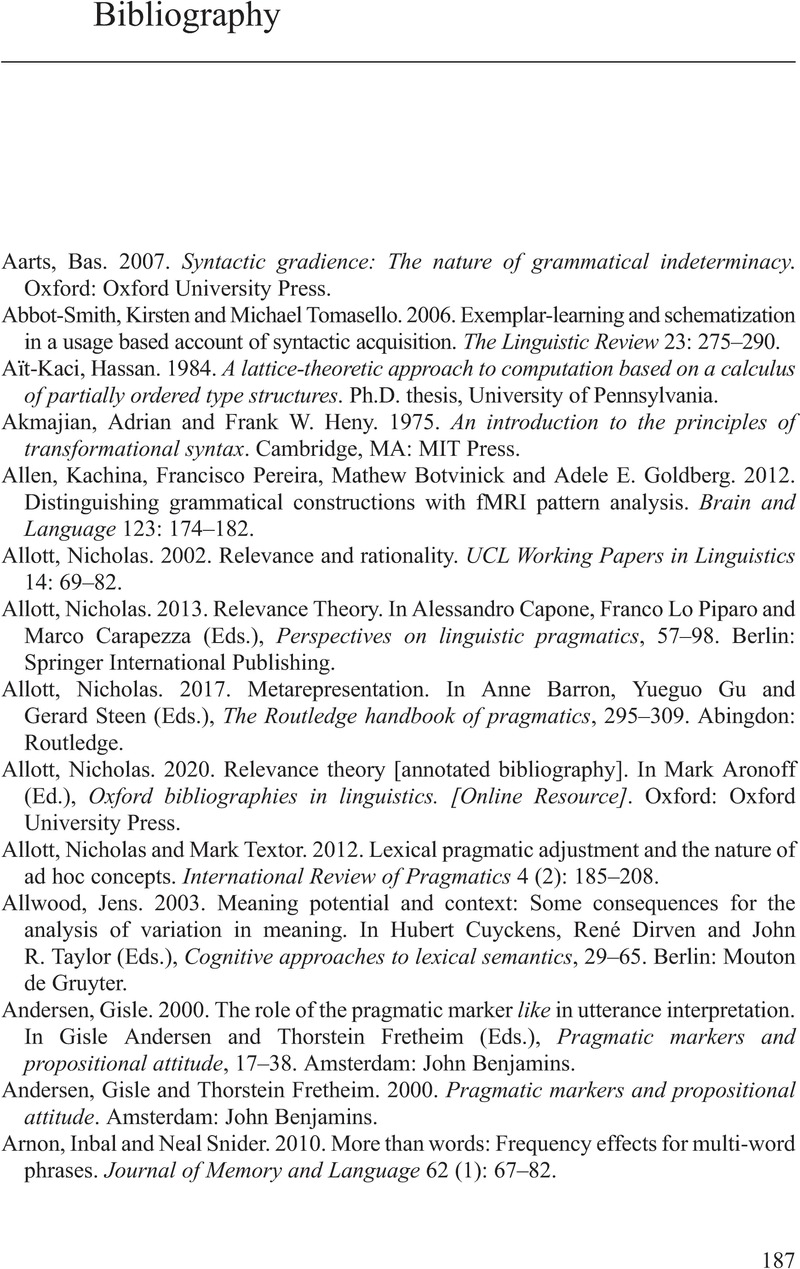Book contents
- Linguistic Knowledge and Language Use
- Linguistic Knowledge and Language Use
- Copyright page
- Contents
- Figures
- Acknowledgments
- 1 Introduction
- 2 Understanding Construction Grammar and Relevance Theory
- 3 Redefining Lexical Semantics and Pragmatics
- 4 Understanding Lexemes
- 5 Conclusion
- Bibliography
- Index
- References
Bibliography
Published online by Cambridge University Press: 19 October 2023
- Linguistic Knowledge and Language Use
- Linguistic Knowledge and Language Use
- Copyright page
- Contents
- Figures
- Acknowledgments
- 1 Introduction
- 2 Understanding Construction Grammar and Relevance Theory
- 3 Redefining Lexical Semantics and Pragmatics
- 4 Understanding Lexemes
- 5 Conclusion
- Bibliography
- Index
- References
Summary

- Type
- Chapter
- Information
- Linguistic Knowledge and Language UseBridging Construction Grammar and Relevance Theory, pp. 187 - 214Publisher: Cambridge University PressPrint publication year: 2023



